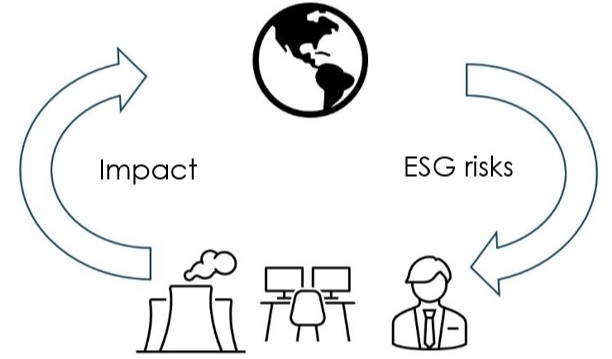In this article, the author outlines how the five essential FP&A team roles can contribute to...

How can FP&A professionals better understand the increasing importance of relationships with non-financial stakeholders and use this knowledge to create value and strengthen their role as strategic Business Partners?
There’s a growing focus on areas beyond the financial side of businesses, which FP&A teams now need to manage. These include ESG (Environmental, Social, Governance), sustainability, and corporate social responsibility. As these areas evolve, finance departments are getting more involved in tracking and planning for these non-financial factors. In this article, under broader stakeholder management, we refer to all parties that can be affected, including clients, suppliers, employees, communities, and the planet.
Why Is This Happening?
Regulations and social pressures are urging businesses to consider these factors, as they can impact financial performance. Also, finance departments are good at managing and analysing different types of data, even though departments such as compliance or HR may be more experienced in specific areas like environmental impact or employee relations. Still, FP&A must plan for the company’s future in relation to its stakeholders.
We suggest examining the company across several axes, grouped into external and internal factors, to help FP&A professionals strategically manage broader stakeholder relations. The external lens includes the company's position and strategy, while the internal one focuses on the role of the FP&A team within the organisation.
We also intentionally use some terminology that is making its way into the accounting and corporate finance world, providing examples to help you better understand core ideas of broader stakeholder management, ESG risks, externalities, and internalisation of such externalities.
Axis 1: Financial Impact vs. Broader Stakeholder Impact
Some business actions affect company profits, while others affect society or the environment without directly impacting finances. In general, the problem that financial management faces could be formulated as profit maximisation. Alternatively, it can be value maximisation if we understand the value as a stream of future profits, which is convenient mathematically because it can tie everything to one criterion. However, factoring in the parameters for other stakeholders who are not impacting the company’s profits causes additional complexity in modelling and planning.
For example, in a low-regulation jurisdiction, a chemical company may pollute the environment without consequences for its profits. These consequences for the environment are often referred to as externalities.
However, there are often consequences that can negatively impact the company. For example, a company may be fined for exceeding pollution levels. Additionally, clients and partners in the supply chain may refuse to do business with the company, which can affect the organisation’s financial results through fines or reduced sales and contracts. This can be called the internalisation of externalities.
In the latter example, the results of the company’s actions toward broader stakeholders could potentially be quantified and included in the company’s financial performance model.
Axis 2: Risk Mitigation vs. Making an Impact
There is a two-way influence between businesses and stakeholders. Businesses impact the climate and society, and in turn, climate and society may impact organisations. This interaction is often referred to as ESG (Environmental, Social, and Governance) risks, which many ESG rating providers assess. By “impact,” we generally mean any change that a company's activities can cause.
For instance, a company’s greenhouse gas emissions can contribute to climate change, representing a negative impact. Conversely, companies also face climate risks such as asset depreciation or damage from flooding. Additionally, as climate change becomes more visible, legal fines and penalties increase. These are examples of ESG risks that companies may encounter.

Figure 1: Two-directional influence between business and broad stakeholder groups
From a Financial Planning and Analysis (FP&A) perspective, desired impact outcomes can be set as corporate planning objectives. Risks are typically used as input variables for Scenario Analysis or adjustments in discounted cash flow analysis.
Axis 3: Reducing Negative Impact vs. Creating Positive Impact
This is about whether a company is focused on reducing harm, for example, addressing biased hiring practices or actively creating opportunities, such as improving hiring for disadvantaged groups. Quantitative modelling in this context should involve setting thresholds that the company aims to meet or exceed. These threshold levels are often based on industry data, specific groups, locations, etc.
Axis 4: Intensity of Stakeholder Reporting and Planning
The amount of reporting and planning required for stakeholder management varies. Bigger companies, those in heavily regulated industries, and B2C may need to do more.
Axis 5: Intensity of Reporting and Planning in FP&A
Those in charge of FP&A operations within the enterprise should not only analyse decisions at the company level but also allocate resources within the department. Two key factors come into play here. First, are there other departments contributing to the effort? Second, does the cost-benefit principle apply, meaning the efforts to collect and analyse data should be less costly than the value added by improved decision-making support? How many workers and hours should be allocated, and what, if any, software and other digital resources should be utilised?
Axis 6: Reporting vs. Planning
Reporting focuses on current data and performance. In contrast, planning is about projecting future goals and budgeting for them.
Let us look at an example: reporting on the current GHG (greenhouse gas) emissions level compared to committing to a net-zero emissions target. Reporting emissions does not imply any obligation to reduce them, as it is simply a disclosure of the facts. Setting a net-zero emissions target, on the other hand, means the company plans to reduce its net emissions to zero, which requires budget planning for the supply chain, transforming operations, investing in equipment, and more.
Axis 7: Compliance vs. Proactive Planning
To comply, a company follows the minimum laws and regulations. For instance, if a business produces a certain level of wastewater pollution to meet legal standards, it ensures the company avoids fines or penalties but doesn't go beyond what is legally mandated. Planning for this might involve using maintenance and equipment depreciation data from previous periods.
Proactive planning happens when a company voluntarily goes beyond legal requirements by adopting initiatives aimed at long-term positive impact. For example, instead of merely meeting pollution limits, the company sets ambitious goals, such as achieving zero wastewater discharge. This involves investing in new equipment and practices, requiring more thorough planning and budgeting and requires different data from the one a company has.
In short, compliance is about adhering to existing rules, while proactive planning is about setting higher standards to positively impact the environment and society.
FP&A professionals continue to evolve into stronger allies and strategic partners, and we must recognise their growing influence. They should continually reflect on how their role—through analysis, insights, and guidance—results in enterprise actions that impact a broader group of stakeholders, whether by making a meaningful difference globally or positively influencing the local environment and community.
Subscribe to
FP&A Trends Digest

We will regularly update you on the latest trends and developments in FP&A. Take the opportunity to have articles written by finance thought leaders delivered directly to your inbox; watch compelling webinars; connect with like-minded professionals; and become a part of our global community.






